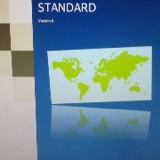Information
-
Document No.
-
Audit Title
-
Client / Site
-
Conducted on
-
Prepared by
-
Location
-
Personnel
18.1 - CONTENTS PROCEDURES (BASE)
-
The site must have documented procedures for the management of weight, volume, size and/or count for each product manufactured to ensure conformance to the legal requirements in the country of manufacture and the intended country of sale.
-
Where the quantity is not governed by legislation, the product must conform to Customer specifications.
18.2 - ACCOUNTING FOR LOSS OF WEIGHT (BASE)
-
Where applicable, allowance must be made for weight loss during transport and display.
-
This is especially the case for products which are prone to moisture loss. In these cases loss over the product's entire shelf life must be known from testing, documented and accounted for.
18.3 - DRAINED WEIGHT AND GLAZE LEVEL CONTROL (BASE)
-
All products stating drained weight or glaze levels must be verified at predetermined frequencies to confirm accuracy, and this must be documented in the product specification, including tolerances.
18.4 - WEIGHT AND VOLUME CONTROL (BASE)
-
Where statistical methods are used to manage weight or volume, appropriate procedures and equipment must be in place.
-
Records must show the individual finished pack results for each batch. For products packed to average weight/volume records must show the average and upper/lower results for each batch.
-
Procedures must detail the actions to be taken if the results fail to meet the specification including the segregation of non-conforming products.
-
Line speeds and batch sizes must be taken into account when determining frequency of weight and volume checks
-
Results must be signed off by a competent individual at the end of each batch.
18.5 - VOLUME CONTROL (BASE)
-
Volume measurement must be established via the physical measurement of contents e.g. using a volumetric flask, a measuring cylinder or weight/density conversion.
18.6 - COUNT CONTROL (BASE)
-
Procedures must be in place to ensure that the correct numbers of items are present in the pack when a number has been declared.
-
Documented checks of product count must be in place.
18.7 - AUTOMATED WEIGHT AND VOLUME CONTROL (BASE)
-
Where used 'In-line' check -weigh systems must be capable of complying with relevant legislation (e.g. recording minimum or average weight data and providing a printed record of the weights).
-
Systems controlling average weight must dynamically measure batch compliance.
-
Similar systems may be utilised for catch weight product where defined weight bands are required.
-
Where 'In-line' check-weigh systems are used and an automatic reject system is in place, rejected products must be rejected into a locked bin (where the size of the product allows) or another secure method. A system must be in place to verify the pack rejection mechanism is effective.
-
Records must be maintained and verified at the end of each batch.
18.8 - EQUIPMENT SETTINGS AND SECURITY (BASE)
-
All automated content control equipment must have adequate security devices so only authorised personnel have access to alter settings.
18.9 - CUSTOMER REQUIREMENT "WEIGHT, VOLUME AND COUNT CONTROL" (BASE)
-
All sites must comply with Customer Requirements for Suppliers e.g. Tesco 60378 - Weight, volume and count control.















